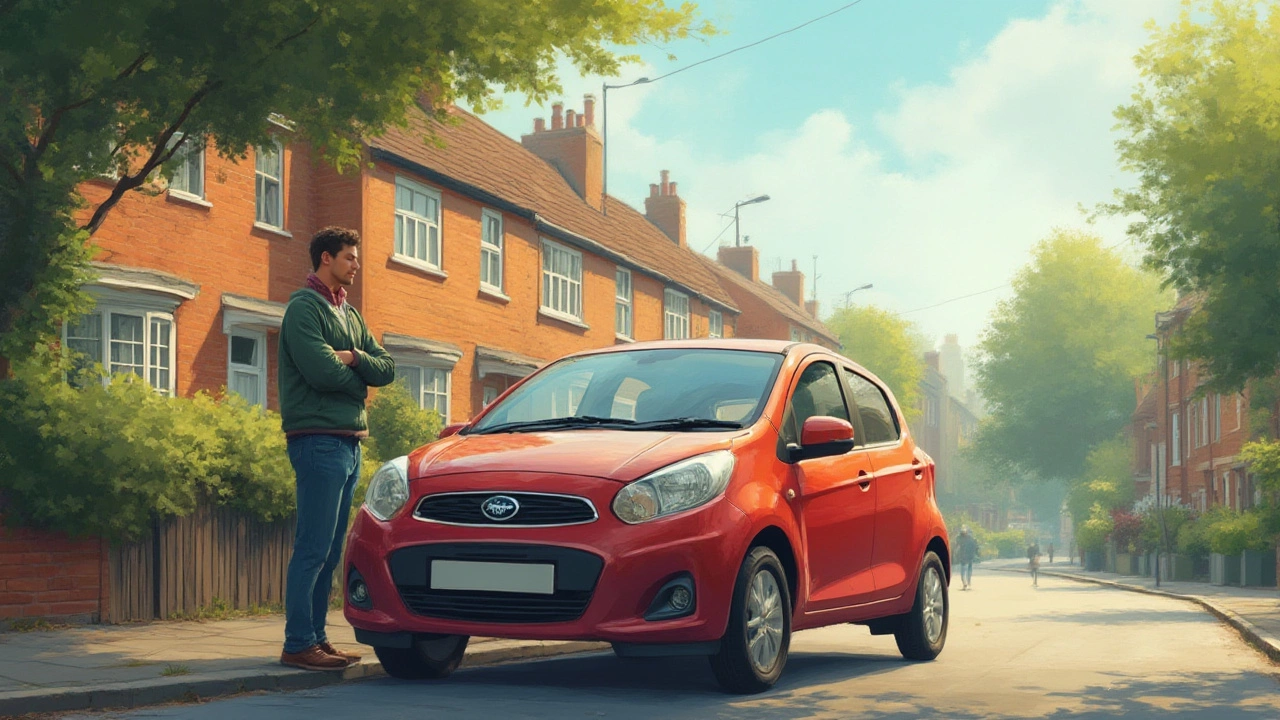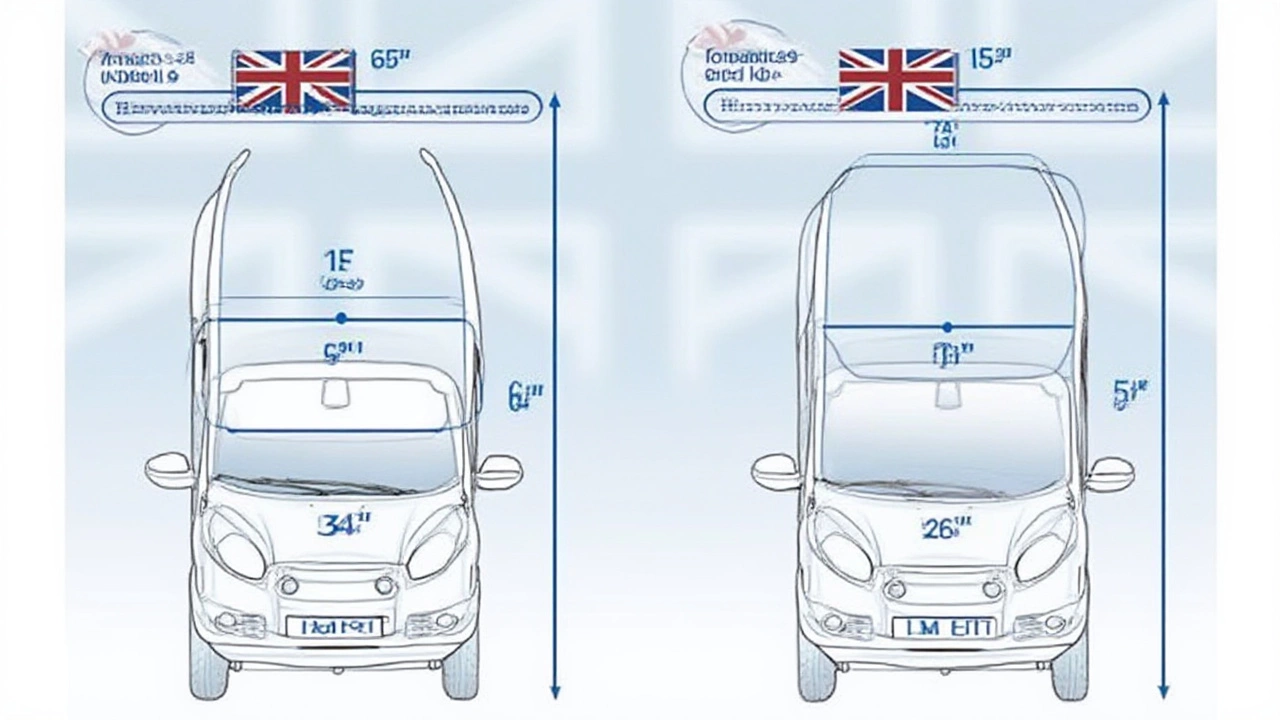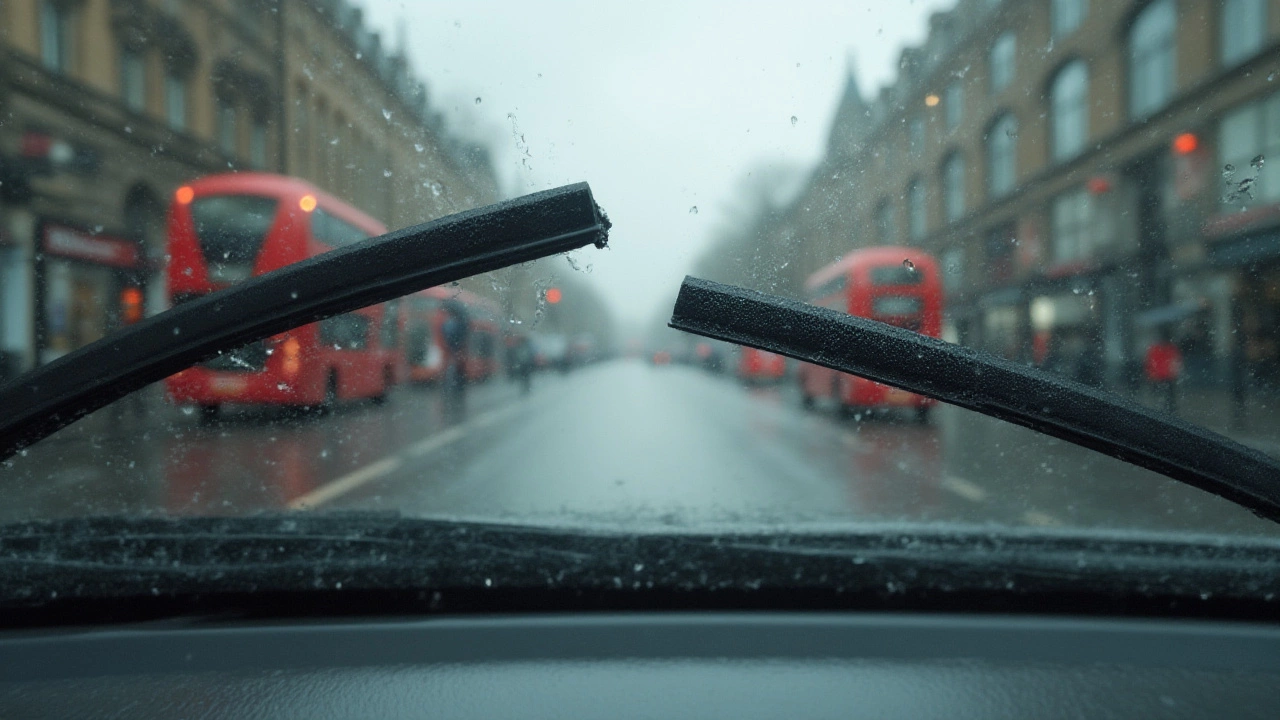There’s almost nothing more annoying than a stubborn wiper that leaves streaks right in your line of vision. Lots of people start wondering—does blade size actually matter that much? Could you just toss on a slightly bigger blade and get better clearing? The idea is tempting: more coverage, less hassle, job done. But car design is all about precision, and the tiny difference between 14 and 15 inches might mean a lot more than you’d think. So, before you pinch that extra inch or grab whatever’s on the shelf, let’s break down what really plays out when you swap out a 14 inch blade for a 15 inch one, especially here in rainy Manchester where your windscreen wipers do some serious overtime.
The Science Behind Wiper Blade Sizes—and Why That One Inch Counts
Swapping a 14 inch wiper blade for a 15 inch might not sound dramatic, but cars aren’t as forgiving as a wardrobe where jumping between shoe sizes is only uncomfortable. Manufacturers test and fit their wipers to hug your windscreen’s unique curve, so an extra inch isn’t just more rubber on glass—it messes with geometry, pressure, and potentially, safety.
Think of your windscreen as part of a puzzle with only one way the pieces fit cleanly—now imagine trying to shove an almost-right piece in the space. That’s what happens with wiper blades. The reason so many vehicles have slightly odd numbered wiper lengths isn’t just a random decision. The arc a wiper travels is calibrated to avoid hitting the windscreen’s trim, missing spots, or clashing with its mate. A 14 inch blade usually covers exactly what it’s meant to. Go up to 15, and that extra bit can end up hitting the edge of the glass, making noise, or simply leaving areas untouched because the arm doesn’t keep even pressure all the way out to the tip.
To see the real impact, let’s check some numbers.
| Blade Size | Common Fitment | Risk of Overlap | Pressure Distribution |
|---|---|---|---|
| 14 inch | Small cars, rear wipers | Low | Even |
| 15 inch | Small/medium cars, front wipers | Medium to high on some models | Less even if swapped |
When the blade is too long, even by just one inch, that can mean uneven pressure, more streaks, or even the wiper not sitting flush on the glass edge. In some cars, increasing blade size means the wiper might hit each other when they’re both working. If you have a setup where both blades sweep toward the centre, one oversized blade can actually get tangled up or collide, wearing out the mechanism or even cracking the glass.
And here’s a stat that surprised me—according to data from the British Vehicle Rental and Leasing Association, improper wiper size is one of the top five causes of wiper motor burnout, a repair that can easily cost you more than £100 and take your car off the road after a rainy weekend. Nobody wants that faff.
Now, if you’re thinking, “But one inch, come on Fergus, how much difference does it make?”—a 15 inch blade covers 7% more surface area than a 14 inch blade. That’s tempting if you think you’re getting more visibility, but on smaller cars (think Nissan Micra or classic Mini), that one inch can literally mean the blade is scraping against your A-pillar or hanging off the glass. And then it’s not even clearing water efficiently.
Wiper pressure also matters more than most people realise. Each arm is sprung to push a certain length and weight onto the glass. Longer blades can flex or skip, missing bits and leading to those half-clean half-blurred patches we all hate. Some modern wipers use specific “aero” designs, so the wrong length can totally ruin that effect—air can catch beneath the blade, causing it to lift at motorway speeds and possibly not clean at all.

What Happens If You Do Use a 15 Inch Blade Instead of 14? Real-World Stories & Car Compatibility
So, let’s say you ignore the number and go for that extra inch. What happens? Plenty of folks have tried it—sometimes out of curiosity, sometimes because the shop only had one size left. The results are almost always a mix of best-case meh and worst-case regret.
If you drive an older car or one with a really simple, rectangular windscreen like some of the first-gen Vauxhall Corsas, you might get away with it for a bit. The blade could clear a little more, and you might even feel like you beat the system. But soon enough, most people notice issues like squeaking, chatter, or the blade skipping entirely over patches of glass. That’s because that outside inch isn’t being pushed down hard enough, so it never makes proper contact.
Modern cars complicate things even further. If your car’s wipers overlap or cross paths, a blade that’s even a touch too long can smack its buddy mid-wipe. Some drivers report that wiper blades of the wrong size have left deep scratches on their car’s trim. Once, I saw a motorist at a petrol station in Stockport cursing under his breath as he tried to wedge a 15 inch blade onto a Fiesta meant for a 14. Even after he forced it, the new blade dragged along the edge, swiped over the glass, and left a wicked high-pitched sound on every pass. Annoyingly, it never quite cleared the corners either.
Blade sizes don’t exist in a vacuum—they’re part of an entire system. Wiper motors, pivots, arms, and even windscreen design are tuned to the original fitment size. Let’s say you fit longer blades every single time. Soon enough, you’ll notice extra strain on the wiper arm joints, which can loosen over time. If you’re unlucky, you could even add enough drag to damage the motor. It doesn’t happen instantly, but it absolutely builds up.
Rain is rarely gentle in Manchester. During one of our proper downpours, those with the wrong-sized blades usually find out fast—a missed spot directly where they need to see, or blades that slap loudly every time they sweep outward. Some unlucky souls have watched their too-large blade actually hop off the edge of the glass, flying out of alignment and getting stuck at the cowl, forcing a roadside stop while rain lashes down. It’s one of those things: seems fine until, suddenly, it isn’t.
Not every car is made the same. Even among models that use 14 inch blades, some have more room at the edge, while others leave barely any margin. I’ve seen people fudge by a half-inch with barely any issue on some classic Fords, but get into a modern hatchback and it quickly goes sideways. The brands designing windscreen wipers—Bosch, Valeo, Trico—spend a staggering amount of test hours making sure their fitment guides are spot on. You can usually find your official size right in your owner’s manual, and there’s a reason that’s the size listed, not just because it’s what happened to be laying around the factory that day.
- 15 inch wiper blade coverage can seem tempting, but only when the car’s original spec allows it.
- Swapping in bigger blades risks missing key vision points or damaging trim.
- Constant blade chatter or unfinished wiping cycles are usually the first red flag.
- Motor wear, noisy operation, and poor fit on the arm itself follow.
Another overlooked issue—MOT requirements. If the inspector finds your wipers fail to clear the driver’s side correctly, or if they hit the windscreen surround, that’s a fail. All for the sake of an extra inch.

How to Choose the Right Wiper Blade—Plus Tips for Cheap, Lasting Replacements
The best way to dodge all the drama? Stick closely to the size your car came with. If you’re not sure, every petrol station and motor factors in the UK has either a wiper fitment chart or a digital check at the counter. And if you’re buying online, plug in your reg plate for a match. Don’t trust rumours or guesswork—always double check, even if it’s a pain in the neck.
Fitting the wrong wiper blade risks a whole lot more hassle and cost than most people imagine. If you want to optimise your blades, there are a couple of tips that actually work:
- Always replace blades in pairs, unless only one genuinely needs it.
- Look for blades with even pressure points (like Bosch Aerotwin or Valeo Silencio).
- Spring for silicone blades if you drive a lot—these last longer and withstand the UK’s mad weather swings.
- Wipe blades with a mix of water and vinegar every month for a streak-free sweep.
- Check your windscreen for chips or cracks, which can chew up new blades fast.
- Never let the arm snap back onto the glass when changing blades, as that shock can crack a windscreen.
Need a simple fitment check? Lay your used blade next to the new one—if the new blade is longer, it’s a warning sign. Sometimes, the difference is almost invisible, but as we’ve covered, it still matters. If you’re between sizes and your car has a curve at the glass corner, always size down, never up. That way, your blade won’t overreach and bash the frame.
If money’s tight and the official brand blades seem expensive, don’t panic. Retailers like Halfords, Eurocarparts, or even Wilko do own brand versions. These follow the size more than the exact brand, so as long as you match the length and the attachment style (hook, pin, or bayonet), it’ll work just fine for everyday use.
Finally, keep an eye out every spring and autumn—our two most miserable seasons for windscreen wipers. Inspect your blades for splits, cracks, or missed spots, and replace immediately if you notice problems. A few quid spent early is far better than gambling with your safety or risking MOT failure for something so small. One last nudge—don’t be afraid to ask around if you’re unsure. Sometimes your mechanic’s best advice comes free over the counter with a smile. And when the skies open over Manchester again, you’ll be glad you didn’t roll the dice with that extra inch.

